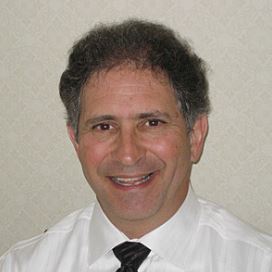“What is the best way to treat dental plaque?”
What is the best treatment for dental plaque and sore gums? I feel the plaque along my teeth.
21 Answers
The best treatment is to get your teeth professionally cleaned at your dentist's office and maintain good oral health practices at home with an electric toothbrush such as a Sonicare or similar toothbrush
Dental plaque is a semi clear sticky substance that forms every day. If it is not removed by flossing it starts to crystallize. Now we constantly are putting food and drink in our mouths. Combine the plaque that forms every 24 hours. the microscopic size food particles. living and dead bacteria and their toxic waste and the mineral content of your saliva you could be feeling tartar. Tartar consists of layers of plaque, rotting food, dead bacteria hardened calcium increasingly getting thicker. Living bacteria and their toxic waste are on the surface of this hardened layer. This toxic material is irritating your gums. Flossing is the only way to prevent the buildup of this material that hardens and becomes tartar. No tooth brush can reach the areas floss can reach. Plaque starts off as a
sticky liquid layer. Flossing around the gum line-tooth area removes the plaque. You have to floss all your teeth. Now you have to brush. With a soft toothbrush. You start in the back with the last tooth in your mouth, place the toothbrush at the tooth-gum line area - 1/2 tooth. 1/2 gum and gently brush back and forth. You start on the cheek side -brush behind the last tooth at the gum line. Behind the last tooth, not flossing or brushing irritates this area. You brush all around to the opposite side and do the tooth-gum line area where your tongue and palate are
located. Then you brush the flat chewing surfaces- upper and lower. You clean your tongue with a tongue cleaner. You can take a spoon and turn the round side facing your palate. You place the spoon in the middle of your tongue. Go back as far as you can without gagging. Scrape forward out of your mouth. You will see a slimy mass of a white. That is what had been hiding out in the nooks and crannies of your tongue. Then do the other two sides of your tongue
Rinse with some warm salt water (1/2 tsp salt to
8 oz.. glass of water) and then gargle.
You may ask- Why is this happening? Our bodies have been fighting this battle alone. Neglecting good home care has affected your mouth. The bacteria in your mouth can be working around your root area with bacteria entering your blood stream. Infection in your mouth is affecting your body. You can't be feeling that great. You may have to go to your dentist to remove the tartar. Ask how to floss and brush. We all need a mouth care review.
Flossing and brushing should be like massage.
You may want to use a water irrigator. If your mouth feels yucky. Before you even floss, irrigating around and between your teeth will show you that YOU can make a difference. You eat every day and mouth care is what you have to do. Flossing and brushing on a daily basis will
eliminate that bad taste you have in the morning.
Gum disease bacteria is passed on to others. Close contact, kissing. eating after one another.
We don't ask if you can look in some one's mouth before you kiss them or eat after them.
If you are told you have gum disease. get it treated. If not treated, it will get worse. Untreated gum disease can lead to tooth loss.
GUM DISEASE IS CONTROLLED WITH GOOD HOME CARE. THERE IS NO CURE. If you need gum disease treatment the latest treatment is LANAP. With LANAP all gum disease bacteria is removed in one treatment. Even if the bone around your teeth is infected the laser will destroy the bacteria. With the LANAP PROTOCOL, patients are shown how to clean their teeth. LANAP TREATMENT uses a special laser, the PerioLase, MVP-7 Laser. This laser and the LANAP PROTOCOL has been FDA approved.
The LANAP PerioLase Laser stimulates your body's own stem cells so you can rebuild your tooth's supporting bone and membranes. The thought of "IF ONLY I HAD A CHANCE TO START
ALL OVER AGAIN". THIS IS YOUR SECOND CHANCE.
The LANAP
sticky liquid layer. Flossing around the gum line-tooth area removes the plaque. You have to floss all your teeth. Now you have to brush. With a soft toothbrush. You start in the back with the last tooth in your mouth, place the toothbrush at the tooth-gum line area - 1/2 tooth. 1/2 gum and gently brush back and forth. You start on the cheek side -brush behind the last tooth at the gum line. Behind the last tooth, not flossing or brushing irritates this area. You brush all around to the opposite side and do the tooth-gum line area where your tongue and palate are
located. Then you brush the flat chewing surfaces- upper and lower. You clean your tongue with a tongue cleaner. You can take a spoon and turn the round side facing your palate. You place the spoon in the middle of your tongue. Go back as far as you can without gagging. Scrape forward out of your mouth. You will see a slimy mass of a white. That is what had been hiding out in the nooks and crannies of your tongue. Then do the other two sides of your tongue
Rinse with some warm salt water (1/2 tsp salt to
8 oz.. glass of water) and then gargle.
You may ask- Why is this happening? Our bodies have been fighting this battle alone. Neglecting good home care has affected your mouth. The bacteria in your mouth can be working around your root area with bacteria entering your blood stream. Infection in your mouth is affecting your body. You can't be feeling that great. You may have to go to your dentist to remove the tartar. Ask how to floss and brush. We all need a mouth care review.
Flossing and brushing should be like massage.
You may want to use a water irrigator. If your mouth feels yucky. Before you even floss, irrigating around and between your teeth will show you that YOU can make a difference. You eat every day and mouth care is what you have to do. Flossing and brushing on a daily basis will
eliminate that bad taste you have in the morning.
Gum disease bacteria is passed on to others. Close contact, kissing. eating after one another.
We don't ask if you can look in some one's mouth before you kiss them or eat after them.
If you are told you have gum disease. get it treated. If not treated, it will get worse. Untreated gum disease can lead to tooth loss.
GUM DISEASE IS CONTROLLED WITH GOOD HOME CARE. THERE IS NO CURE. If you need gum disease treatment the latest treatment is LANAP. With LANAP all gum disease bacteria is removed in one treatment. Even if the bone around your teeth is infected the laser will destroy the bacteria. With the LANAP PROTOCOL, patients are shown how to clean their teeth. LANAP TREATMENT uses a special laser, the PerioLase, MVP-7 Laser. This laser and the LANAP PROTOCOL has been FDA approved.
The LANAP PerioLase Laser stimulates your body's own stem cells so you can rebuild your tooth's supporting bone and membranes. The thought of "IF ONLY I HAD A CHANCE TO START
ALL OVER AGAIN". THIS IS YOUR SECOND CHANCE.
The LANAP
Dental plaque should be removed at least twice per day utilizing proper brushing and flossing techniques. If the plaque still feels like it is on your teeth after brushing, you likely have hardened plaque, called calculus, that needs to be removed by a dental hygienist or dentist.
Everyone has dental plaque. This is a result of the foods/drinks in addition to our own saliva. You state that you feel plaque along your teeth. Plaque is easily removed with a toothbrush. However, tarter is plaque that has adhered to the tooth structure. To have that removed you will need to see your dental office. If your gums are sore, please see your dentist/dental hygienist disease.
If you can feel it with your tongue it's no longer plaque which is more like the consistency of a paste and is easily highlighted by disclosing solution in a bright light. What you're probably feeling is plaque that is beginning to calcify around the margins of the gum becoming once known as gingival calculus. This will have to be removed with mechanical instrumentation and may possibly require the services of a periodontist depending on how advanced your symptoms are. Where you likely went wrong and are prone to repeat in life is failure to realize you have to see your dentist twice a year to remove this bacteria prior to it becoming calcified. What's your dentist or hygienist dismisses you his next visit get a travel brush not necessary to have two faced and brush between meals after you eat and you will find that your check ups will be none eventful.
A thorough brushing 2 minutes total duration focusing on circulation motions along the gum line as well as daily flossing and the addition of an ADA approved oral rinse. Also, get a professional cleaning 2 times a calendar year.
Simply put, dental plaque needs to be physically disturbed and removed. That is accomplished with proper brushing of the teeth, and using something like floss and/or a rubber tip stimulator to remove plaque build up between the teeth. Some people accumulate plaque at a much faster rate than others, usually as a result of salivary content. If you are one of those folks, then you will need to work that much harder to try to control your plaque accumulation as compared to individuals that do not tend to build it up either so quickly or so heavily. Good luck. Seek out the proper techniques for brushing, flossing, and rubber tip use from your dental professional or hygienist. I recommend automatic brushes for those who cannot easily or effectively manipulate the manual brush for whatever reason.
A professional cleaning and scaling by a dentist or hygienist. Followed by brushing twice daily with a rotary toothbrush, floss, flops pics, and alcohol free mouth rinse.
The hard material that forms on your teeth is called calculus. It can only be removed professionally at a dental office. This material cannot be flossed or brushed off. Once it is removed, brushing and flossing help maintain the health of the gums. You should then have your teeth cleaned at a dental office twice a year. Prolonged time spans between cleaning can lead to gingivitis and periodontal disease, which later leads to tooth loss.
The best way to treat dental plaque is to prevent build up by regular proper flossing and brushing daily and regular dental visits for exam and maintenance. If your gums become sore it could be gingivitis or a more severe periodontitis. Both of which could require a more involved treatment. Your best solution is to visit a dentist for evaluation and diagnosis to formulate a treatment plan and follow through with treatment. Dr. Grimm
The best way is to have a professional cleaning with a hygienist at a dental office. If your gums are sore and you can actually feel the plaque/calculus along your gum lines then you may possibly need a deep cleaning to remove all of this hardened bacteria. The sooner you do it, the sooner the gums will not be inflamed and sore and return back to normal health.
The best way to remove plaque is routine flossing and brushing. However, after plaque has been left on the teeth long enough, it will harden into tarter. At this point you need to have your teeth professionally cleaned by a dental hygienist. You will not be able to brush or floss off the tarter. If the tarter is not removed, it causes inflammation of the gum tissues. This will lead to gum disease and bone loss if you let go long enough. This is the most common cause of loss of teeth. Hope that helps to answer your question.
Longer and meticulous brushing and flossing and periodical prophylactic cleanings in dental office. When brushing, follow a proper technique.
The best way to treat it is to see the dentist for a cleaning. Once the plaque has been professionally cleaned off your teeth, you can keep it off by using an anti-plaque toothpaste and brushing twice a day. Flossing and using an anti-plaque mouthwash will also keep you plaque free. You may need to see the dentist more frequently than every year or 6 months if needed.














